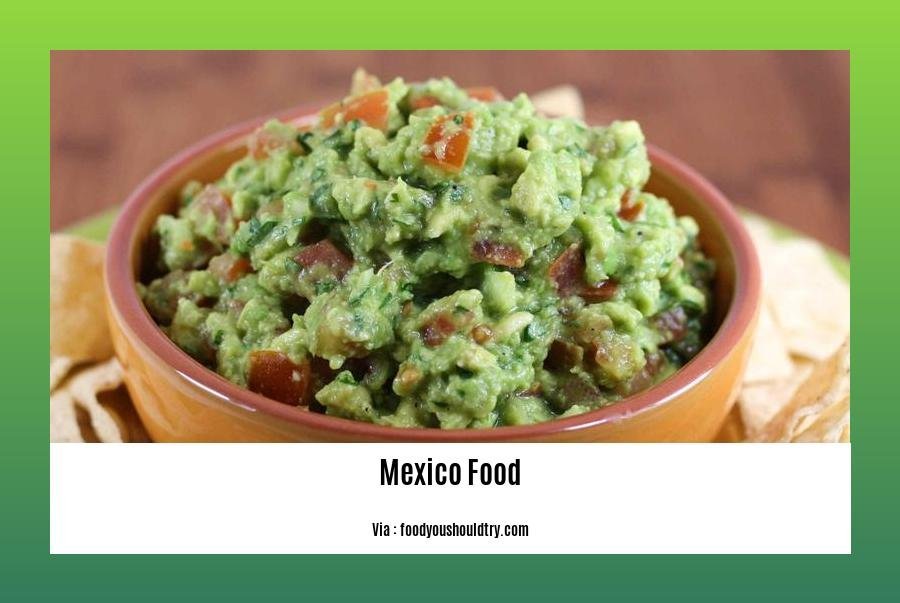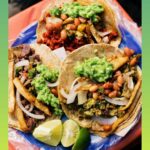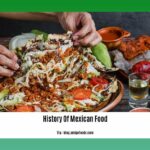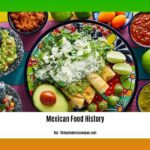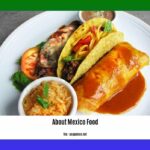In the tapestry of world cuisines, Mexican food stands out as a vibrant masterpiece, earning its rightful place as a UNESCO World Cultural Heritage. From the sizzling aromas of street stalls to the refined flavors of upscale restaurants, Mexican cuisine captivates all senses with its diversity, health benefits, and time-honored traditions. Join us on a culinary journey through Mexico, where tacos transcend the boundaries of breakfast, tamales reveal ancient origins, and every bite bursts with flavor, history, and cultural heritage. Savoring the Sights, Smells, and Stories: Discover the Rich Facts about Mexican Food.
Key Takeaways:
Traditional Mexican cuisine is rich in corn, beans, chili peppers, and unique vegetables and fruits.
Regional dishes are influenced by climate, location, and cultural influences.
Classic dishes include pozole, a stew with Aztec origins, and mole, a sauce with variations.
Mexico’s street food scene offers a vibrant array of snacks and dishes, but caution is advised regarding hygiene and safety.
Native ingredients like chocolate, chilies, and corn are foundational in Mexican cuisine.
The staples are corn and rice, with meat and seafood varying by region.
Facts about Mexico Food
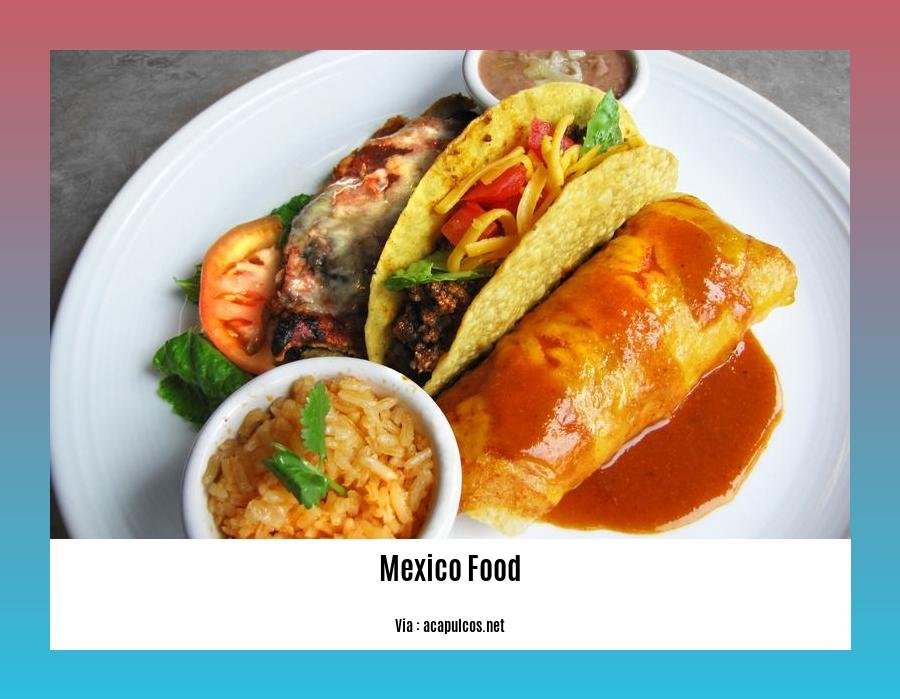
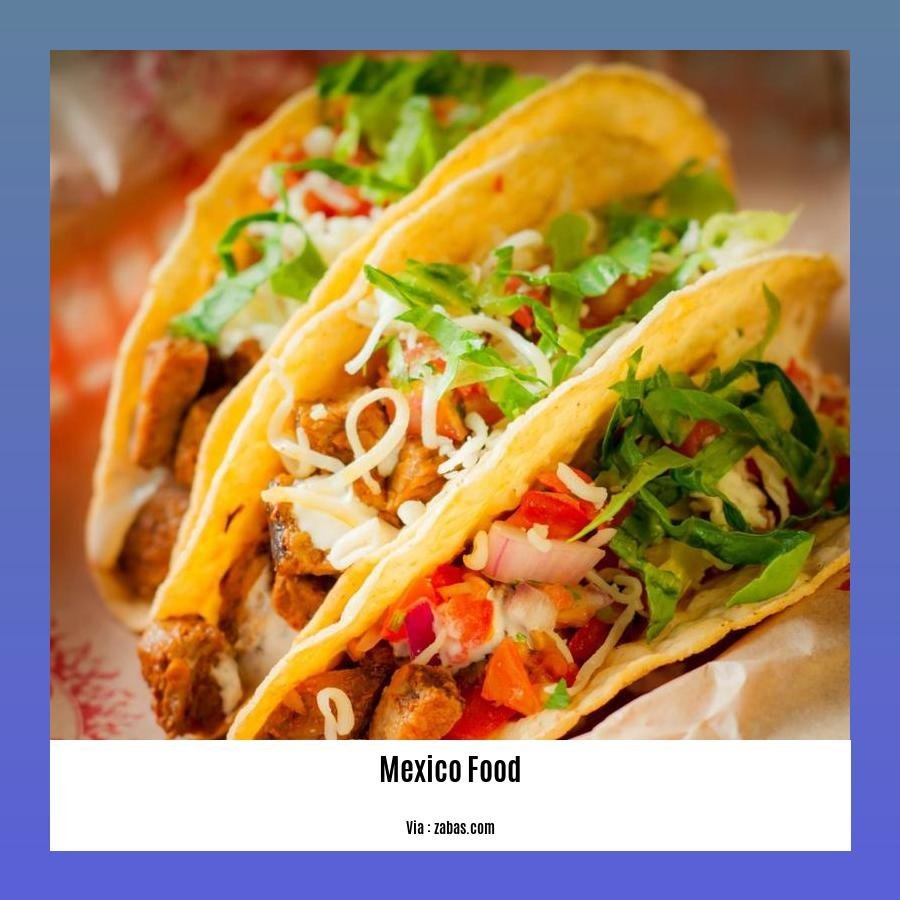
Uncover the fascinating world of Mexican cuisine as we delve into its captivating history, diverse ingredients, and mouthwatering dishes. From humble street stalls to renowned restaurants, Mexico’s culinary scene offers a symphony of flavors, colors, and textures. Get ready to embark on a journey of taste and discovery!
1. A Culinary Symphony: The History of Mexican Cuisine
Mexico’s culinary heritage is a tapestry woven with threads from various cultures. From the ancient Aztecs to the Spanish conquistadors, each civilization left its mark on the country’s cuisine. This fusion of influences gave birth to a unique and vibrant culinary landscape that continues to captivate taste buds worldwide.
2. A Pantry of Flavors: Exploring Mexican Ingredients
The foundation of Mexican cuisine lies in its diverse ingredients. Corn, beans, and chili peppers form the holy trinity of Mexican cooking, providing the base for countless dishes. Unique vegetables and fruits like quintonil, chayote, cactus, romeritos, and jackfruit add vibrant hues and distinctive flavors to the culinary landscape.
3. Regional Delights: A Culinary Journey Through Mexico
Mexico’s vast geography and rich cultural diversity have given rise to a multitude of regional cuisines. Each region boasts its unique dishes, reflecting the climate, location, and cultural influences of the area. From the spicy mole of Oaxaca to the tangy pozole of Guerrero, every region offers a tantalizing culinary adventure.
4. Street Food Paradise: A Culinary Adventure on Every Corner
Mexico is a street-food haven, with vendors offering a staggering variety of snacks and dishes. From sizzling tacos and crispy churros to refreshing aguas frescas and tangy esquites, the streets of Mexico are a culinary playground, offering affordable and authentic taste sensations.
5. A Balancing Act: Navigating Street Food Safety
While street food is a quintessential part of the Mexican experience, it’s essential to exercise caution. Not all vendors are created equal, and some may not adhere to strict hygiene standards. Choose wisely, look for signs of cleanliness, and avoid consuming raw or undercooked foods to ensure a safe and enjoyable street food experience.
6. Native Treasures: The Heart of Mexican Cuisine
Mexico is the birthplace of culinary treasures like chocolate, chilies, and corn. These ingredients, deeply embedded in Mexican culture and cuisine, form the backbone of many traditional dishes. Chocolate, with its rich and complex flavors, adds a touch of sweetness and indulgence to beverages and desserts. Chilies, with their fiery kick, bring depth and heat to countless dishes, while corn, a versatile staple, is used in everything from tortillas to tamales.
7. Staple Ingredients: The Foundation of Mexican Cuisine
The mainstays of Mexican cuisine are corn and rice, providing the foundation for a variety of dishes. Corn, in its various forms, including tortillas, tamales, and pozole, is a versatile and essential ingredient. Rice, often cooked with flavorful broths or vegetables, adds a hearty base to many Mexican dishes. Meat and seafood play a prominent role, with regional variations reflecting the abundance of local ingredients.
8. A Culinary Legacy: The Enduring Appeal of Mexican Food
The popularity of Mexican food extends far beyond its borders, capturing the hearts and palates of people worldwide. Its vibrant flavors, diverse ingredients, and rich cultural heritage have made it a beloved cuisine around the globe. From taco trucks in bustling cities to fine-dining establishments serving elevated Mexican fare, the influence of Mexican cuisine is undeniable, leaving an indelible mark on the culinary landscape.
Did you know that France is the only country in the world that has more cheese varieties than there are days in a year? Find more intriguing cultural nuances like this one in our fun facts about France culture article. So, prepare to be amazed!
Mexican food is so much more than tacos and burritos. Discover fun facts about Mexico food that will make your mouth water and your mind wander to the vibrant streets of Mexico.
From the unique flavors of chapulines (grasshoppers) to the colorful history of mole sauce, interesting facts about Mexico food offer a glimpse into the rich culinary heritage of Mexico. Prepare to be amazed!
4. Tacos Can Be Eaten for Any Meal
Tacos, the versatile stars of Mexican gastronomy, can be enjoyed from sunrise to sunset. Whether you’re craving a hearty breakfast or looking for a scrumptious midnight snack, there’s a taco out there that will satisfy your cravings.
Key Takeaways:
- Tacos are a Mexican dish consisting of corn or wheat tortillas filled with various ingredients.
- Tacos can be eaten for any meal, from breakfast to dinner.
- There are many different types of tacos, each with unique fillings and toppings.
- Tacos are often served with salsas, guacamole, and other condiments.
- Tacos are a popular and affordable food that can be found all over Mexico.
Breakfast Tacos:
- Kickstart your day with a breakfast taco filled with scrambled eggs, chorizo, and potatoes.
- Add some salsa verde and cotija cheese for a flavorful and energizing start to your day.
Lunchtime Tacos:
- For a quick and satisfying lunch, grab a taco filled with al pastor pork, onions, and cilantro.
- Complement it with a refreshing horchata or a tangy tamarind agua fresca for a complete meal.
Dinner Tacos:
- Indulge in a hearty dinner with tacos filled with grilled steak, roasted vegetables, and melted cheese.
- Pair them with a glass of Mexican beer or a margarita for a delightful culinary experience.
Midnight Snack Tacos:
- For a late-night treat, satisfy your cravings with a taco filled with shredded chicken, guacamole, and sour cream.
- Accompany it with a warm cup of atole or a sweet champurrado for a comforting and satisfying snack.
Conclusion:
Tacos, a culinary tapestry of flavors and textures, are not just a food; they are a symbol of celebration, nourishment, and convivial dining. Whether enjoyed at a bustling street stall or in the comfort of your home, tacos are an embodiment of Mexico’s rich culinary heritage. So, embrace the versatility of tacos and savor them at any time of the day for a truly authentic Mexican experience.
References:
[1] Tacos | Traditional Street Food From Mexico – TasteAtlas: https://www.tasteatlas.com/tacos
[2] 29 Yummy (and Funny) Facts About Mexican Food – Sand In My Suitcases:
3. Tamales are One of the Oldest Mexican Foods
Tamales, the delectable parcels of cornmeal goodness, are not just a beloved Mexican dish but also a testament to the country’s rich culinary history. Their origins date back to the ancient Mesoamerican civilizations, where they were revered as a staple food and a symbol of sustenance.
Key Takeaways:
- Tamales have a rich history, dating back to 8000 to 5000 BC in Mesoamerica.
- These are crafted using masa, a dough made from nixtamalized corn, and filled with a variety of ingredients.
- Tamales have enjoyed popularity and significance in Mexican culture, being present in feasts, festivals, and everyday meals.
Tamales in Time:
Tamales have stood the test of time, embraced by generations for their versatility and affordability. Their journey through history has been marked by cultural influences, from the indigenous civilizations to the Spanish conquistadors. Today, tamales proudly adorn the streets, markets, and dinner tables of Mexico, delighting locals and visitors alike.
Crafting the Tamale:
Creating tamales is an art form, a labor of love that blends tradition with modern-day variations. The foundation of a tamale lies in masa, a dough made from nixtamalized corn. Masa’s unique flavor and texture arise from the process of nixtamalization, where corn is steeped in alkaline water, resulting in a highly nutritious and versatile ingredient.
The Diverse Fillings:
A tamale’s allure lies not just in its masa but also in its diverse fillings. From tender meats, cheeses, and rich regional sauces to fresh vegetables, fruits, and exotic ingredients, the variety is seemingly endless. Each filling carries its own story, reflecting the region’s unique flavors and culinary traditions.
A Culinary Legacy:
Tamales have become an integral part of Mexican cuisine, a testament to their enduring popularity and significance. Their flavors have crossed borders and captured the hearts of food lovers worldwide. Whether served as a humble street food, a cherished family recipe, or a gourmet delicacy, tamales remain a beacon of Mexican culinary heritage.
Sources:
[1] https://en.wikipedia.org/wiki/Tamale
[2]
FAQ
Q1: What are some of the main staple foods in Mexican cuisine?
A1: Corn and rice are the main staple foods, while meat and seafood vary by region.
Q2: What is the origin of tacos?
A2: Tacos originated in Mesoamerica and were traditionally eaten for lunch, but they are now enjoyed at various times of the day.
Q3: What are tamales made of?
A3: Tamales are made of masa, a dough made from nixtamalized corn, and steamed in corn husks or banana leaves, with a filling that can vary according to taste and include meats, cheeses, fruits, vegetables, herbs, and chilies.
Q4: What is the history of tamales?
A4: Tamales originated in Mesoamerica as early as 8000 to 5000 BC and were eaten by the Mayans during feasts and festivals, serving as a staple in Belize, where they are known as dukunu, a sweet corn tamale.
Q5: Why is Mexican cuisine considered a World Cultural Heritage?
A5: Mexican cuisine was recognized by UNESCO as a World Cultural Heritage in 2010 due to its cultural significance, variety of flavors, and unique cooking techniques that have remained alive for centuries.
- Crypto Quotes’ Red Flags: Avoid Costly Mistakes - June 30, 2025
- Unlock Inspirational Crypto Quotes: Future Predictions - June 30, 2025
- Famous Bitcoin Quotes: A Deep Dive into Crypto’s History - June 30, 2025
